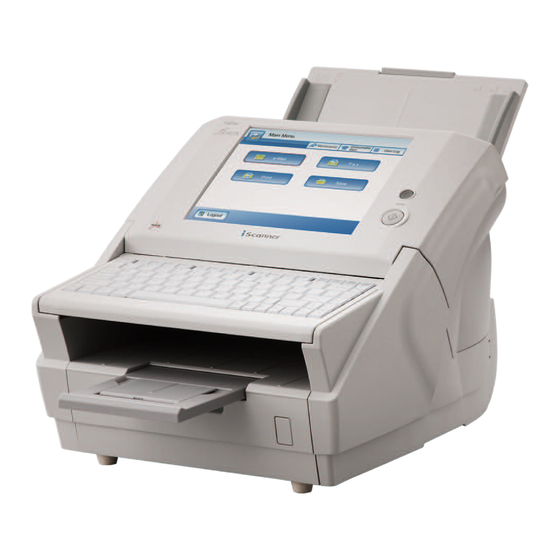3. Set the scanner's IP address. This may be
done automatically, by pressing the DHCP [On]
button.
The IP address may also be set manually, by
pressing the DHCP [Off] button and entering
the following numerical addresses:
• IP Address
• Subnet Mask
• Default Gateway
4. Press the [OK] button.
⇒
The information entered is set.
If the IP address is the same as one
HINT
already in use, network communica-
tion problems will occur. In this case,
try the following steps:
1. Disconnect the LAN cable, press
the [Shutdown] button on the
touch panel, and turn the scan-
ner off.
2. Reboot the scanner with the
LAN cable still disconnected,
and enter a non-duplicate IP
address.
3. Re-connect the LAN cable to the
scanner.
When DHCP is set to "On", the follow-
ing settings are assigned by the
DHCP:
•
IP Address
•
Subnet Mask
•
Default Gateway
•
DNS Server
•
WINS Server
•
Domain Suffix
Even if DNS or WINS server is set, pri-
ority is given to the scanner settings
over the DHCP settings.
Continue with the connection settings.
3.6 Setting the Admin Network
Set the network settings for connecting to a scanner
from the Admin Tool or Central Admin Server.
1. Select the [Network Settings] tab on the top
menu.
2. Select the [Admin Network] tab on the left side
menu.
⇒
The "Admin Network" screen appears.
3. Enter a port number from 1 to 65535, to be
used by the scanner to communicate with the
Admin Tool or Central Admin server.
The default setting is 80.
•
Port numbers 135, 139, 445, and
ATTENTION
numbers from 1025 to 1124, cannot
be specified as they are already
reserved in the scanner.
•
If port numbers other than
HTTP:80, HTTPS:443 are to be
specified, it is recommended that
numbers over 5000 are used. If a
port number lower than 5000 is
specified, verify the Admin Tool
connectivity with the port number
first.
9
4. Select whether or not to enable SSL.
Select the [On] button enables SSL. If SSL is
enabled, press the [Regenerate] button to create
another SSL Certificate. When a new SSL Certifi-
cate is created, the contents of the certificate are
changed. The contents of the SSL Certificate are
as follows.
•
Issued by
Displays the SSL Certificate issuer.
•
Valid from
Displays the SSL Certificate expiration date.
The expiration date is five years from the
date on which the certificate was created.
This is shown in date form.
Selecting the [Off] button disables SSL.
5. Press the [OK] button.
⇒
The communication settings are set.
The following settings combinations
ATTENTION
are not possible.
•
Port Number "80" and SSL "On"
•
Port Number "443" and SSL "Off"
Continue with the DNS settings.
3.7 Setting the DNS Server
A primary DNS and secondary DNS can be set.
1. Select the [Network Settings] tab on the top
menu.
2. Select the [DNS Server] tab on the left side
menu.
⇒
The "DNS Server" screen appears.
fi-6010N Network Scanner Getting Started
3. Enter the following numerical addresses:
• Primary DNS
• Secondary DNS
If a DNS server setting is not required, enter
"0.0.0.0".
A Secondary DNS cannot be set
ATTENTION
without a Primary DNS.
DNS Dynamic Update and DNS Suf-
fix can also be set.
HINT
The current FQDN is shown for the
FQDN. However, if the scanner is not
connected to the network, the FQDN
may not be displayed correctly.
4. Press the [OK] button.
⇒
The information entered is set.
Continue with the WINS settings.
3.8 Setting the WINS Server
A primary WINS and secondary WINS can be set.
1. Select the [Network Settings] tab on the top
menu.
2. Press the [
] button on the left side menu.
⇒
Scroll the left side menu down until the
[WINS Sever] tab appears.
3. Select the [WINS Server] tab on the left side
menu.
⇒
The "WINS Server" screen appears.
10

